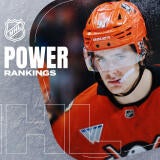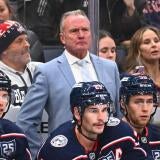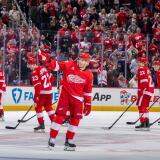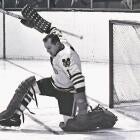
NHL Preview: With Jack Eichel, Sabres can now focus on winning
The days of cheering for losses in Buffalo are over. With Jack Eichel set to make his NHL debut this season, Sabres fans should actually have some hope for their team.

The Buffalo Sabres redefined what it meant to be a bad hockey team over the past two seasons by winning only 44 out of 164 games, a level of play that is usually reserved for expansion teams.
As bad as it was, and as difficult as it was to watch at times, it was mostly by design.The front office knew it. The fans knew it (many of them embraced it). We all knew it.
And it worked.
Years of mismanagement put the Sabres organization in a position where it was steadily declining in the standings (making the playoffs just twice in eight years, losing in the first round both times) and was mired in mediocrity. Instead of remaining in the hockey purgatory between the contenders and the bottom-feeders, the Sabres front office decided to take what was perhaps the most practical -- even if controversial -- approach. Tear the whole damn thing down, be as bad as can be for a couple of years, stockpile as many high-end talents as possible and start over from scratch.
Even though nobody will actually admit that this is what took place (the closest you will probably get is Sabres owner Terry Pegula saying the past two seasons were a success -- by winning 44 out of 164 games) it was pretty obvious that winning games was not the front office's primary objective the past two years, sparking a season-long debate about the merits of organizational "tanking" for draft position, especially as fans started to openly root for losses as the season progressed.
But this wasn't an otherwise good team that just decided it didn't want to win. This wasn't players taking nights off and trying to lose (the players did their jobs and played as hard as they could -- they just weren't very good as a group). This was an organization that was going nowhere and the front office (smartly) decided its best chance to bring competitive hockey back was to struggle for a couple of years and stockpile high-end players who could turn the franchise around. And the best -- and perhaps only -- way to get those type of players in a salary cap league is to get them at the top of the draft. This was especially true in 2014-15, when the draft had not one, but two potential franchise players. There was a very clear reward for finishing at the bottom of the standings, and that reward was the guarantee that you would get one of Connor McDavid or Jack Eichel.
The Sabres, who lost the draft lottery and picked second, ended up with Eichel just one year after taking Sam Reinhart in the same spot. And that is what can make all of the bad hockey over the past two years worth it in the long-run.
Along with the addition of Eichel, the Sabres also added a number of high-end NHL players to the roster over the past several months by trading for Evander Kane (from the Winnipeg Jets), Ryan O'Reilly (from the Colorado Avalanche) and Robin Lehner (from the Ottawa Senators), signing defenseman Cody Franson and bringing in a Stanley Cup-winning coach with a strong NHL résumé in Dan Bylsma.
It's a clear sign that the days of rooting for losses and hoping for draft position are over in Buffalo, and with Eichel set to make his NHL debut this October it's officially the start of a new -- and what should be more successful -- era of Sabres hockey.
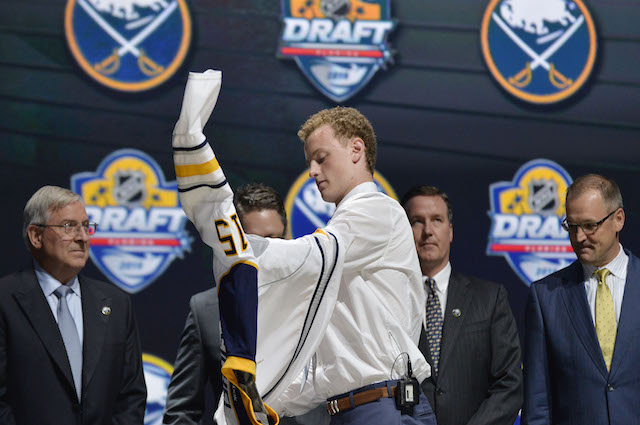
New additions: Evander Kane, Ryan O'Reilly, Robin Lehner, Cody Franson, Jack Eichel, David Legwand, Carlo Colaiacovo, Jamie McGinn, Sam Reinhart
Key losses: Cody Hodgson, Nikita Zadorov, Mikhail Grigorenko
Top returning scorers: Tyler Ennis (78 GP, 20-26--46), Matt Moulson (77 GP, 13-28--41), Brian Gionta (69 GP, 13-22--35)
Total salary against cap: $62,707,855
Remaining cap space: $8,692,145
Biggest question heading into the season: Is Robin Lehner a No. 1 goalie in the NHL?
The Sabres better hope he is, because they paid a significant price to get him by giving up one of their three first-round picks in the 2015 draft. In an offseason where goalies like Cam Talbot and Eddie Lack went for less (after coming off of better seasons) in trades it was a pretty big investment by the Sabres. But for all of the young talent they have added into the organization over the years at forward and on defense the one area they hadn't really addressed was goaltending. They are hoping Lehner, 24, can help address that long-term hole. He has shown flashes in his career of being a quality starter but he's coming off a disappointing 2014-15 season with the Senators that ended prematurely due to a concussion. In 24 appearances he managed a pedestrian .905 save percentage, which came after a .913 performance in 36 games the previous season.
The good news for the Sabres, though, is that his performance has been about what you would expect from a goalie given his age and experience level. According to the hockey-reference database, Lehner is one of only eight goalies since 2000 to start at least 70 games before his 24th birthday, and his performance to that point (career save percentage of .914) is in the same area as guys like Carey Price (.916), Semyon Varlamov (.915) and Sergei Bobrovsky (.909).
Season outlook
The Sabres probably aren't going to make the playoffs this season, simply because they have so far to go based on the team they had the past few seasons (they would need to improve their goal differential by more than 100 goals from where it was a year ago, and that is nearly impossible to do in only one off-season).
But the days of them being the worst team in hockey and barely resembling an NHL team are done.
The roster that general manager Tim Murray and his staff have assembled this season actually looks like a real NHL team and has a great mix of established players who are just starting to hit their prime (Kane, O'Reilly) and potential superstars who are just going to be breaking into the NHL (Eichel, Reinhart). With the additions of Kane and O'Reilly the past two seasons, the arrival of Eichel and Reinhart, and the return of players like Matt Moulson, Tyler Ennis and Brian Gionta, Buffalo's forward group is going to be significantly improved from where it was less than eight months ago.
Since March alone they've added a potential 30-goal winger (Kane), one of the better two-way centers in the league capable of handling the tough defensive minutes (O'Reilly), and a potential franchise-changing player at the top of the draft (Eichel). And that doesn't even include Reinhart, the No. 2 overall pick in 2014, and the other additions of Legwand, Lehner and the recent signing of unrestricted free agent Cody Franson.
One of the biggest mistakes rebuilding teams make is going too young and having too many players trying to make their mark in the league. Those are the teams that end up getting stuck in an endless cycle of losing and are never able to break it. The most successful teams when it comes to rebuilding are able to collect a mixture of young players, players in their prime and experienced veterans who can handle the tough assignments and big minutes allowing the younger players room to grow. Murray and his staff seem to get that and have made sure to put a strong supporting cast of veterans around their young stars.
There are still weak spots on the roster (especially on defense) and there are going to be growing pains along the way. And even if Eichel turns out to be everything he is expected to be and more it's still probably not going to be enough to get the Sabres into the playoffs this season. Even teams like Pittsburgh, Washington, Tampa Bay and the New York Islanders missed the playoffs in their first seasons with soon-to-be superstars like Sidney Crosby, Alex Ovechkin, Steven Stamkos and John Tavares. If you're in a position to pick a player like that at the top of the draft it means your team has too many holes for one teenager to fix in one year. But this season can still be the start of something big in Buffalo.
It can be the beginning of their return to relevance in the NHL and the return of a competitive Sabres team after two years of awful and at times embarrassing hockey.


